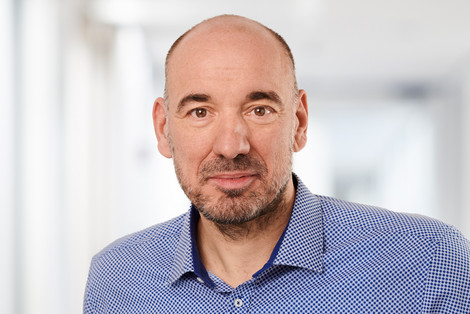Gene Regulation
Background
The control of gene expression in multicellular organisms is a higly regulated process and can be divided into transcriptional and posttranscriptional regulatory events. The transcriptional regulation is controlled by a complex network of different regulatory proteins. These proteins modulate the activity of the RNA polymerase, the enzyme that performs the transcription of a gene (functional region in a genome, which is transcibed). Post-transcriptional regulation is controlled by different proteins and RNAs which are combined in different post-transcriptional regulatory processes. These processes change the amount of transcribed RNA specifically and unspecifically.

Transcription factors (TFs) are proteins that regulate the efficiency of the transcription. Most of them act by recognizing cis-regulatory elements or transcription factor binding sites (TFBSs). Each active transcribed gene in a cell is regulated by a set of TFs which are bound to a regulatory region. The different TFs either bind directly to a regulatory region through the present TFBS or interact indirectly with previously sequence-specifically bound TFs. There are several distinguishable regulatory regions for one gene.
All of these TF-bound regions are aggregated at the transcription start site (TSS) and from a huge Protein-DNA-complex to define the necessary transcriptional activity for each gene. This complex influences the transcriptional initiation mainly.
Most of the DNA in transcriptional active cells is compacted by a protein complex called nucleosome. Further compaction levels provide an organizational structure of the genomic material in a cell type specific manner (chromatin structure). A complex interaction network of post-transcriptional modifications and composition of these nucleosomes indicate distinct regions in the genome. On the basis of these structures, regulatory active regions, transcriptionally active regions (genes) or inactive sites in a genome can be differentiated.
Research Foci
In our work on gene regulation we are intersted in the coordinated functions of TFs and proteins which define the chromatin structure in a cell type specific manner. Using different time or cell type specific data based on healthy or disease conditions, we hope to understand the relationship between these two different regulatory levels in more detail.
We are working on the following topics:
- Prediction of TFBSs
- Prediction and analysis of transcriptional networks
- Analysis of DNA hypersensitivity assays, immunoprecipitation (IP) of proteins that interact with DNA, modified histones, chromatin remodelling proteins and transcription factors sequencing data
- Application of machine learning methods to analyze nucleosome positioning, transcription factor binding sites composition in the context of proximal and distal regulatory interactions
Current projects
CRU 5002 (Pancreatic carcinoma)
Pancreatic ductal adenocarcinoma (PDAC) is considered one of the greatest clinical challenges of modern cancer medicine. Our department is part of the Clinical Research Group "Characterisation and Targeting of Genome Dynamics for a Subtype-Specific Therapy of Pancreatic Carcinoma" . The aim of this clinical research group is to analyse further subtypes by studying the genome dynamics of the carcinoma and thus contribute to the development of individualised therapies. For more information please see the project page.
Selected Publications
Tapia Contreras C, Falke JD, Seifert DM, Schneider C, Krauß L, Fang X, Müller D, Demirdizen E, Spitzner M, De Oliveira T, Schneeweis C, Gaedcke J, Kaulfuß S, Mirzakhani K, Wollnik B, Conrads K, Beißbarth T, Salinas G, Hügel J, Beyer N, Rheinländer S, Sax U, Wirth M, Conradi LC, Reichert M, Ellenrieder V, Ströbel P, Ghadimi M, Grade M, Saur D, Hessmann E, Schneider G.
KRASG12C-inhibitor-based combination therapies for pancreatic cancer: insights from drug screening.
Mol Oncol. 2025 Feb;19(2):295-310. doi: 10.1002/1878-0261.13725. Epub 2024 Sep 10. PMID: 39253995; PMCID: PMC11792994.
Gaedcke J, Sahrhage M, Ebeling M, Azizian A, Rühlmann F, Bernhardt M, Grade M, Bechstein WO, Germer CT, Grützmann R, Piso P, Hofheinz RD, Staib L, Beißbarth T, Kosmala R, Fokas E, Rödel C, Ghadimi M; German Rectal Cancer Study Group.
Prognosis and quality of life in patients with locally advanced rectal cancer after abdominoperineal resection in the CAO/ARO/AIO-04 randomized phase 3 trial.
Sci Rep. 2025 Feb 13;15(1):5401. doi: 10.1038/s41598-024-83105-z. PMID: 39948076; PMCID: PMC11825916.
Paul NB, Wolber JC, Sahrhage ML, Beißbarth T, Haubrock M.
Prediction of gene expression using histone modification patterns extracted by Particle Swarm Optimization.
Bioinformatics. 2025 Feb 4;41(2):btaf033. doi: 10.1093/bioinformatics/btaf033. PMID: 39878927; PMCID: PMC11802466.
Sahrhage M, Paul NB, Beißbarth T, Haubrock M.
The importance of DNA sequence for nucleosome positioning in transcriptional regulation.
Life Sci Alliance. 2024 Jun 3;7(8):e202302380. doi: 10.26508/lsa.202302380. PMID: 38830772; PMCID: PMC11147951.
Daou R, Beißbarth T, Wingender E, Gültas M, Haubrock M.:
Constructing temporal regulatory cascades in the context of development and cell differentiation.
PLoS One. 2020 Apr 10;15(4):e0231326. doi: 10.1371/journal.pone.0231326.
Wingender E., Schoeps T., Haubrock M., Dönitz J.:
TFClass: expanding the classification of human transcription factors to their mammalian orthologs.
Nucleic Acids Res. 2018 Jan. 4;46(D1):D343-D347
doi: 10.1093/nar/gkx987
Haubrock M., Hartmann F., Wingender E.:
NF-Y binding Site Architecture Defines a C-Fos targeted Promoter Class.
PLoS One. 2016 Aug. 12; 11(8):e0160803
doi: 10.1371/journal.pone.0160803
Schirmer M.A., lüske C.M., Roppel S., Schaudinn A., Zimmer C., Pflüger R., Haubrock M., Rapp J., Güngör C., Bockhorn M., Hackert T., hank T., Stroebel O., Werner J., Izbicki J.R., Johnsen S.A., Gaedecke J., Brockmöller J., Ghadimi B.M.:
Relevance of Sp Binding Site Polymorphism in WWOX for Treatment Outcome in Pancreatic Cancer.
J. Natl. Cancer Inst. 2016 Feb. 8; 108(5)
doi: 10.1093/jnci/djv387
Members of the group
Currently the following people work together to achieve our aims
- Martin Haubrock (Head of the group)
- Hazal Timucin (PhD-student)
- Christian Ickes (PhD-student)
- Martin Kingsley Stoves (PhD-student)
- Johannes Richter (Phd-student)
- Inigo Vicente Hernandez (PhD-student; in cooperation with Prof. Dr. V. Ellenrieder)
Former members of the group (since September 2019)
- Linh Dang (Postdoc)
- Karly Conrads (PhD-student)
- Niels Benjamin Paul (PhD-student, Cooperation with Prof. Hasenfuß (UMG)
- Malte Sahrhage (PhD-student)
- Nikita Srivastava (Master Student)
- Lion Wolf (Bachelor student)
- Vivian Raulin (Master Student)
- Aman Modi (Master Student)
- Jonas Wolper (Master Student)
- Carolin Brune (Bachelor Student)
- Norman Weinert (Master Student)
- Isabel Liebermann (Lab Rotation)
- Tim Van-den-Berg (Research Assistant)
- Christian Ickes (Bachelor Student)
Bachelor- or Master thesis
We offer different topics for Bachelor- or Master thesis in this field.
If you are interessed, please contact:

contact information
- telephone: +49 551 3961784
- e-mail address: martin.haubrock(at)bioinf.med.uni-goettingen.de
- location: 2.114
contact information
- telephone: +49 551 3961781
- e-mail address: daniela.grossmann(at)bioinf.med.uni-goettingen.de
- location: 2.107
That might also interest you